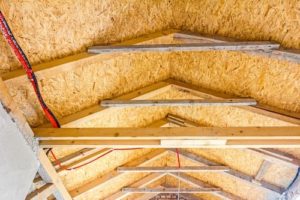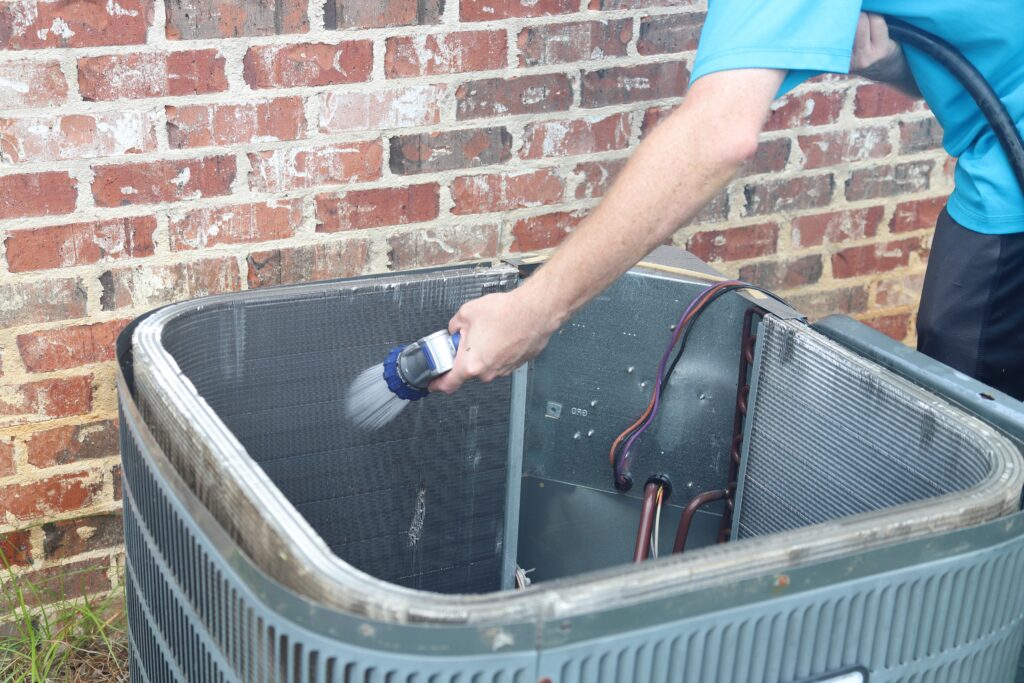
Attic fans provide much-needed air flow in the attic to prevent high temps from damaging a roof.
Your home needs air flow in the attic, and how! Stagnant, hot summer air that hovers in the attic is bad for two reasons: It puts an enormously large load on a home’s cooling system and causes damage to a roof. Even when summer temperatures are in the moderate range, temperatures in an attic can exceed 150 degrees Fahrenheit!
Without good air flow, a home’s cooling system must work harder to bring down temperatures inside the home. Attic fans lighten the load on HVAC systems. By venting hot air out of the attic, they bring the attic temperature down by 50 degrees.
A roof already has built-in ventilation by way of the soffits and passive roof vents on the rooftop. The passive cooling of the vents helps, but without thewind, there won’t be much air movement in the attic. At the very least, add a powered vent on the rooftop.This will create additional air flow in the attic on hot, muggy days when there isn’t a breeze in sight.
Electric-Powered vs Solar-Powered Attic Fans for Needed Airflow in the Attic
There are two types of active fansthat provide additional air flow in the attic. Electric-powered attic fans or power roof vents are one option for keeping your attic free of damaging summer heat. Solar-powered attic fans are another. Below is a summary of these options and why it makes sense to install one over the other.
Electric-Powered Attic Fans
An electric-powered attic fan can actively create a powerful source of attic ventilation. When the air that is ventilated through the attic is powered, it’s much more effective than a passive ventilation system. The air inside the home is exchanged many more times per hour.
But the electricity that is used to run an electric-powered attic fan can cost over a couple of hundred dollars every year. Plus, it really isn’t the best option when trying to reduce your carbon footprint or lowering your overall energy bills.
Installation of an electric-powered attic fan is often complicated since electric wires and switches need to be set up to enable a power source for the fan. A potential shortcoming of this type of fan is its inability to help cool the home during daytime power outages.
Solar-Powered Attic Fans
Solar-powered attic fans are a more recent option and a better green alternative for creating air flow in the attic. They circulate air with or without the presence of wind and remove heat and moisture that builds up on windless days. And they can keep your living space cooler without adding to your carbon footprint. Both types of fans are generally maintenance-free but only the solar-powered version costs absolutely nothing to operate. Since the sun’s rays are free, why pay the electric company lots of money month after month to keep an attic cool and dry?
A solar-powered fan can be more expensive to purchase initially. But with a little down up front, it can begin paying for itself in as little as a few months. It’s best to think of this type of purchase as an investment.
Solar-powered attic ventilation systems deliver comfort and peace of mind. They require no electrical wiring, providing for easy installation and maintenance. What’s more, since solar-powered attic fans prevent heat and moisture from exceeding critical levels, an attic stays drier and cooler. This allows for greater comfort, lower utility bills, and a prolonged roof life, too.
Yes, solar-powered attic fans save money on electricity costs. How much you save depends on the cost of electricity in your home, the amount of attic space, the efficiency of your attic insulation, and the amount of ventilation your solar-powered attic fan provides.
Solar-powered attic fans typically last two or three times as long as their power counterparts. Power models also tend to pull more air than the eave vents bring in, which eats into the air that you’re paying good money to cool.
Important Considerations When Installing Any Powered Attic Fan
When was the last time a professional energy consultant took a look up in your attic or for that matter when was the last time you did? Have you ever gone into the attic and left the light off to see how much daylight is visible at the eaves or gables?
Inadequate ventilation causes roof damage. When a power attic fan cannot suck enough air from the blocked or insufficient eave vents, it draws air from your air-conditioned house. This is why Blue Frost Heating & Cooling installs only solar-powered attic fans that self-regulate the amount of ventilation created to match what the eaves can support.
In order for a powered fan on the rooftop to provide maximum benefit, care must be taken to examine the insulation over the interior ceiling areas. Everything must be sealed tightly. It’s important to seal openings or gaps around attic entryways or exhaust vents as well as the attic plane (attic floor) before engaging any type of attic fan. The layer of drywall or plaster between your house and attic is called the attic plane and should be air tight. And why does an attic plane leak? Because we poke lots of holes in it with the attic hatch, can lights, bath fans, poorly built soffits, and the list goes on. Even while sleeping, air leaks out and your bills go up.
If drafts aren’t properly sealed off, new insulation may act more like an air filter than an insulator, and insulation dust will find its way into the house. The fan will pull air from the interior of the home which has already been cooled defeating the purpose of the attic fan and driving utility bills upward.
Care must also be taken to ensure there is adequate air flowing into the attic from the soffit vents. Occasionally a well-meaning homeowner will insulate the attic all the way up to the edges, covering the soffits. But when there is no airflow in the attic, air is drawn from inside the air-conditioned home, again defeating the purpose.
Provide Your Home with Adequate Air Flow in the Attic and Save Your Roof

Provide your home with needed air flow in the attic to bring damaging temps down and prevent damage to your roof. Blue Frost Heating & Cooling’s HVAC specialists are certified and experienced. Call Blue Frost Heating & Cooling at 630-444-0860 now for installation of an attic fan. Breathe fresh air and save your roof today!
Blue Frost Heating & Cooling
Professional and Certified
Cooling, Plumbing, Heating
Your leader in home comfort and customer service for 25 years
Conveniently Located Now in Two Locations:
416 E. Wilson Street, Batavia, IL, 60510
504 E. Main Street, St. Charles, IL, 60174
Call 630-444-0860; for emergencies, call 630-444-0860






